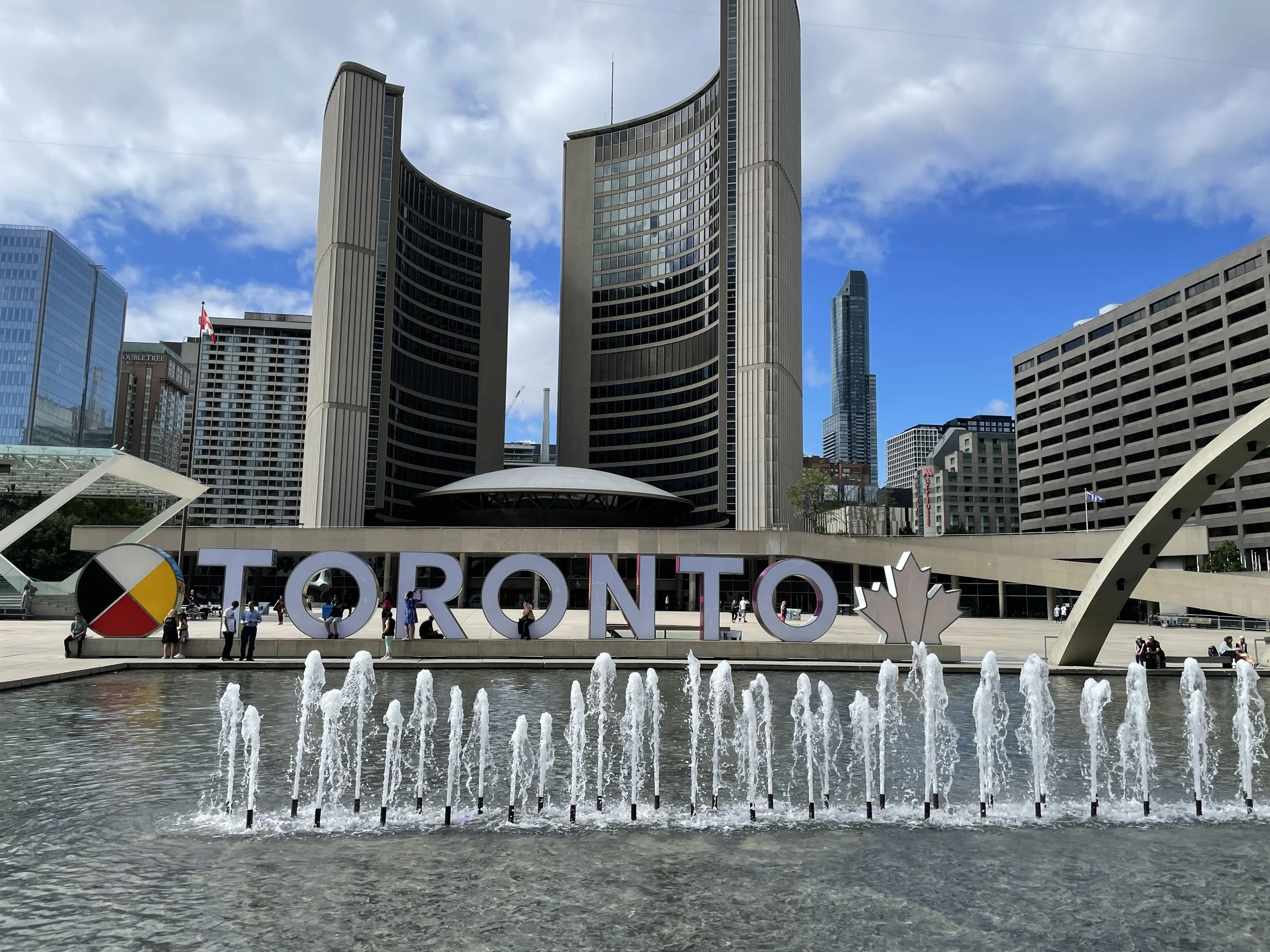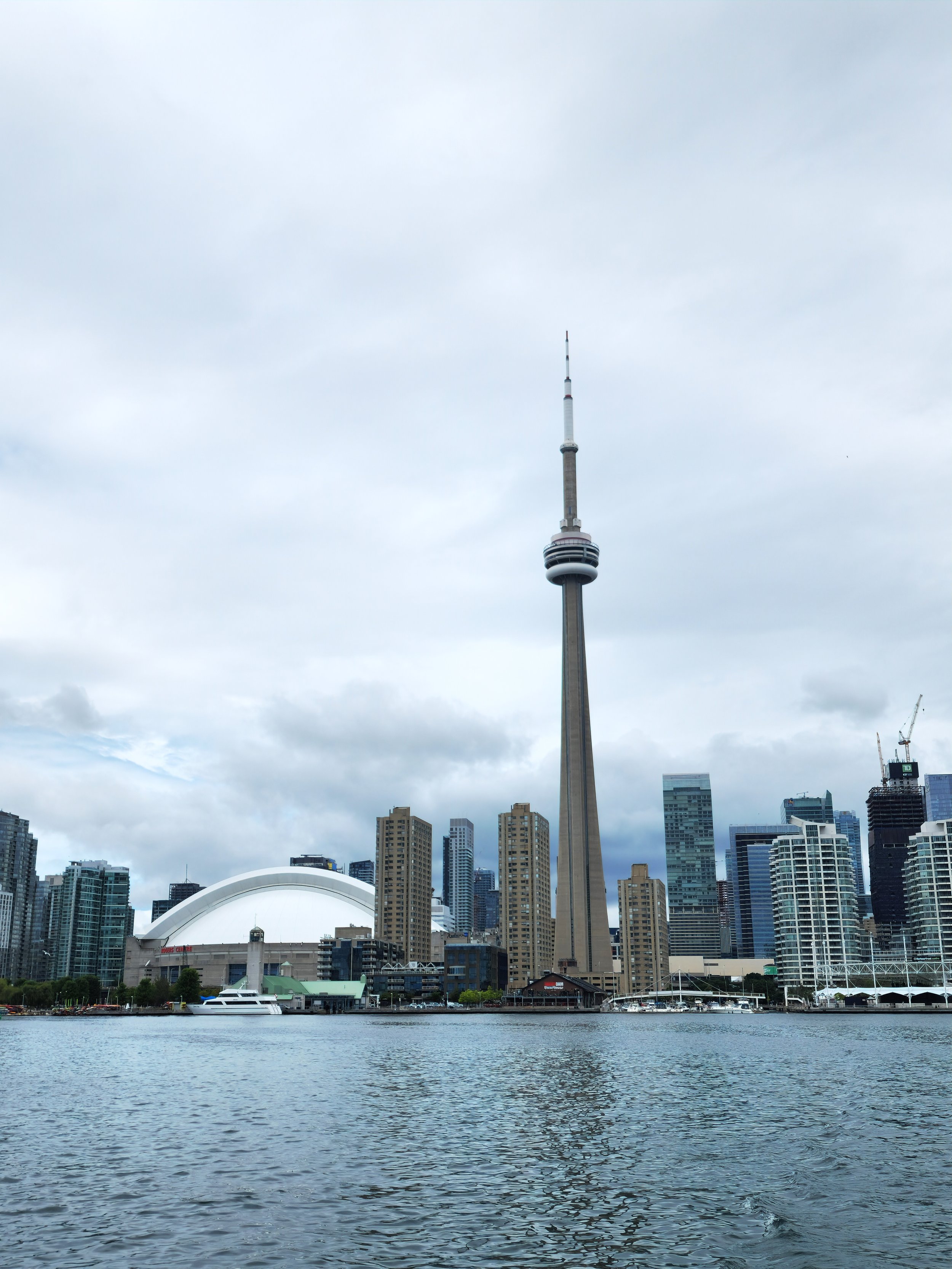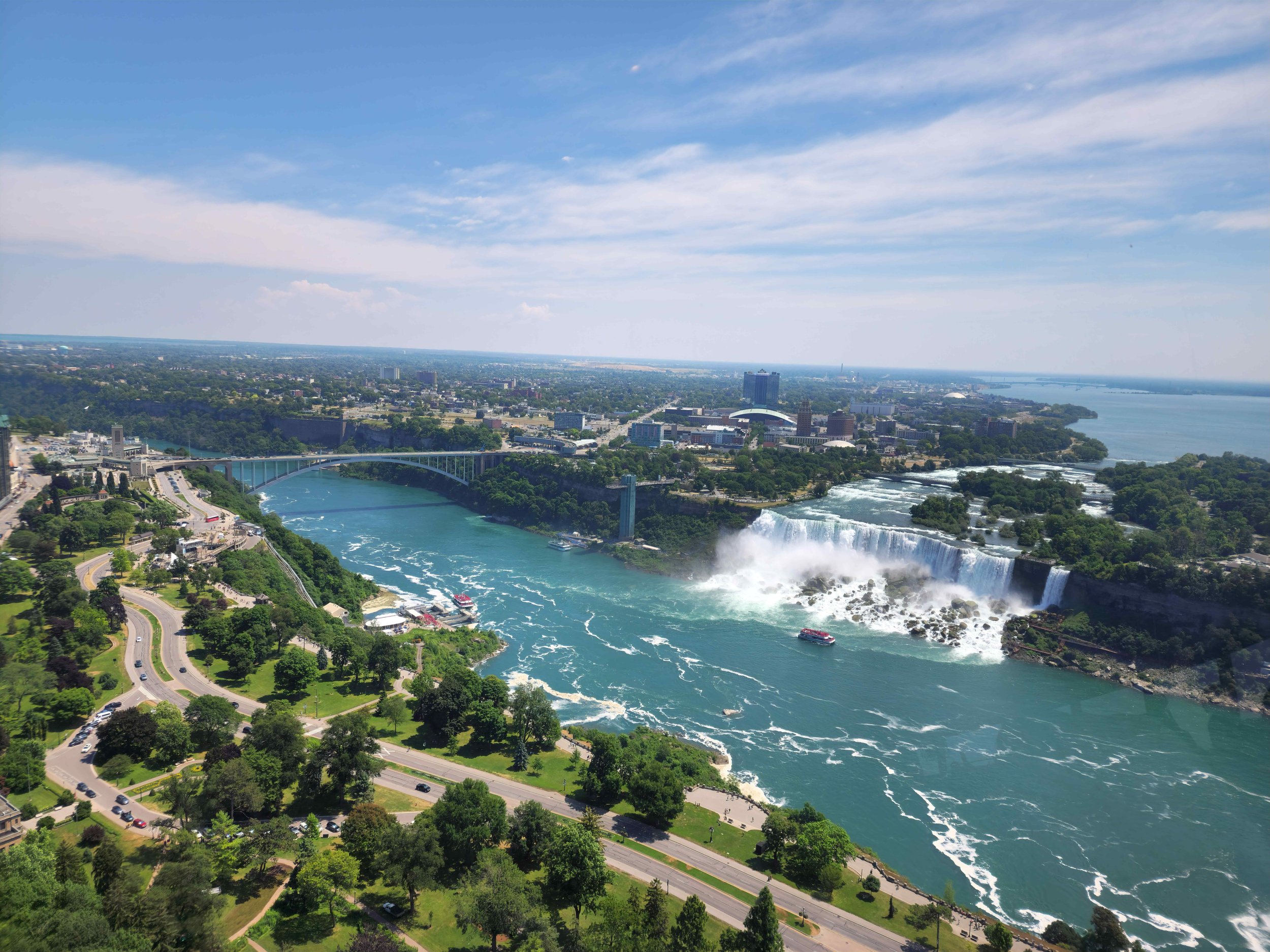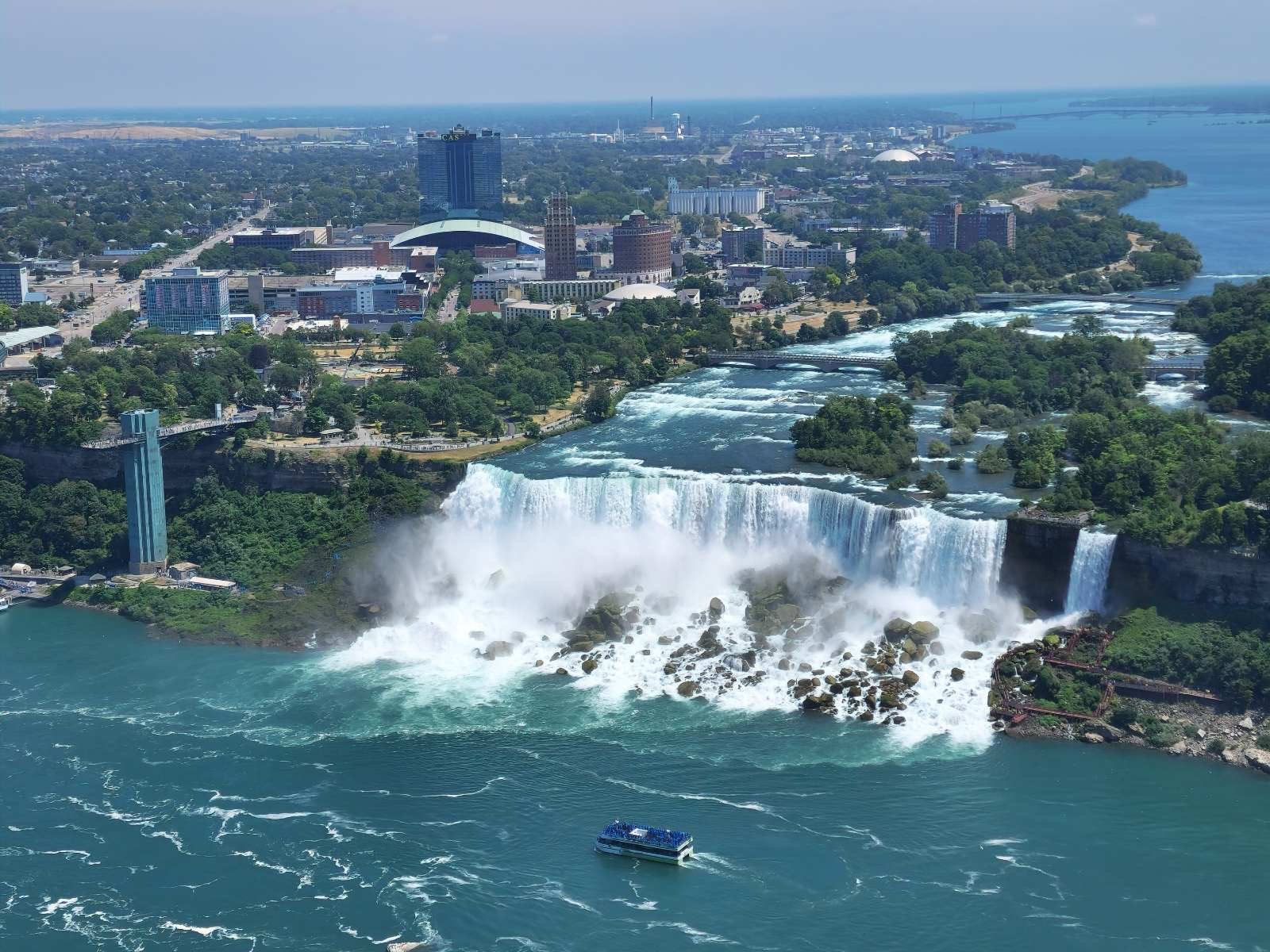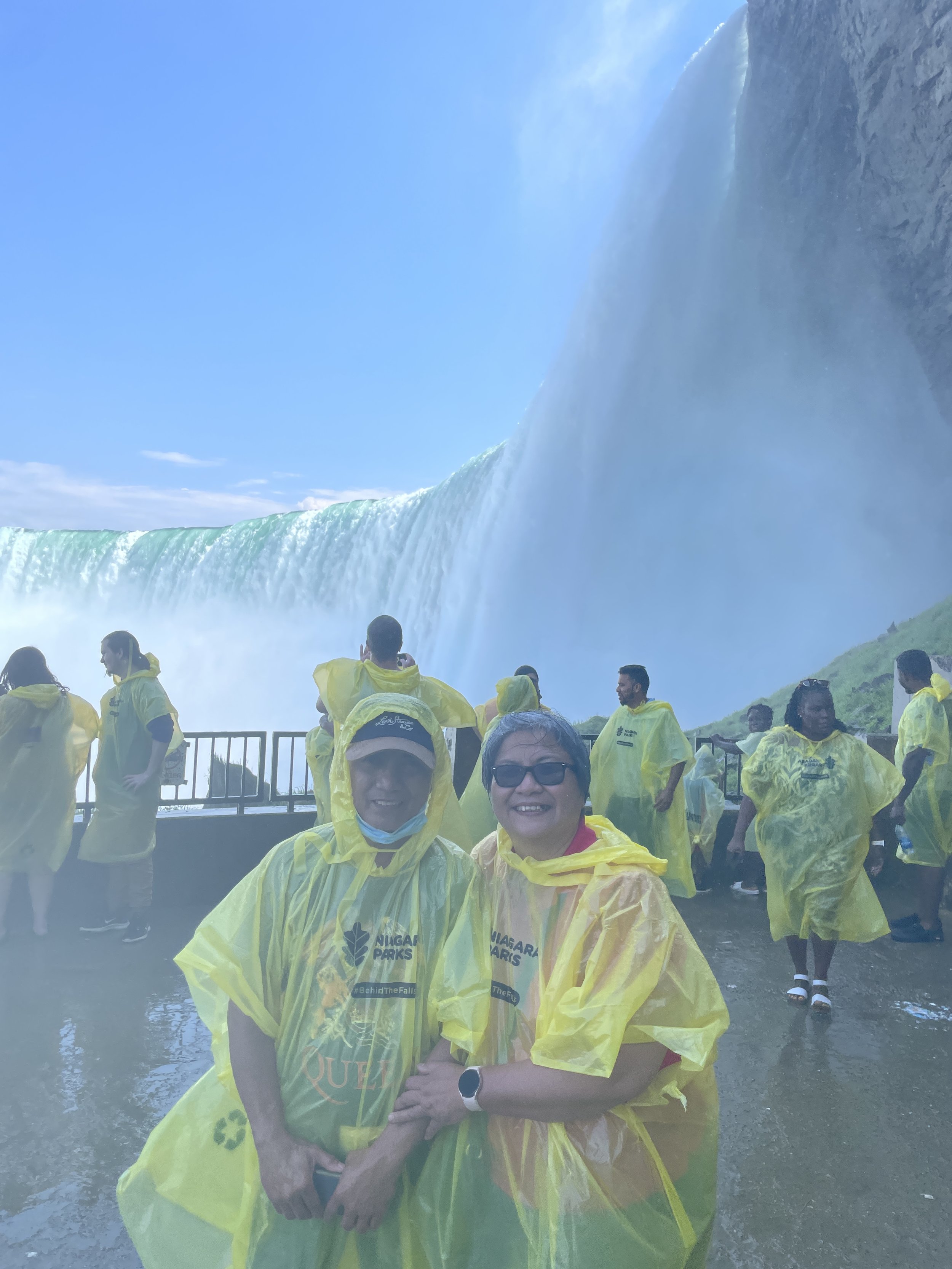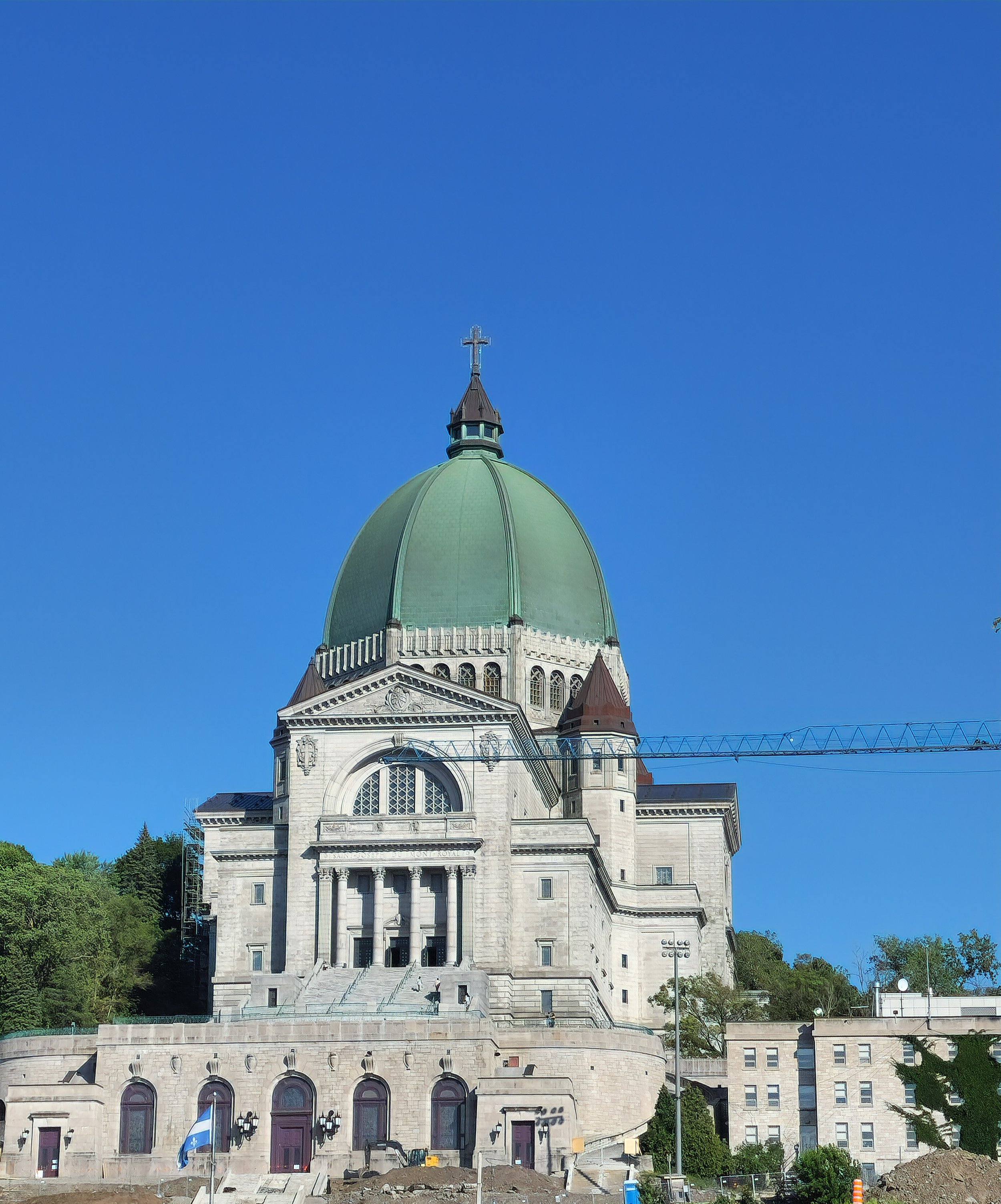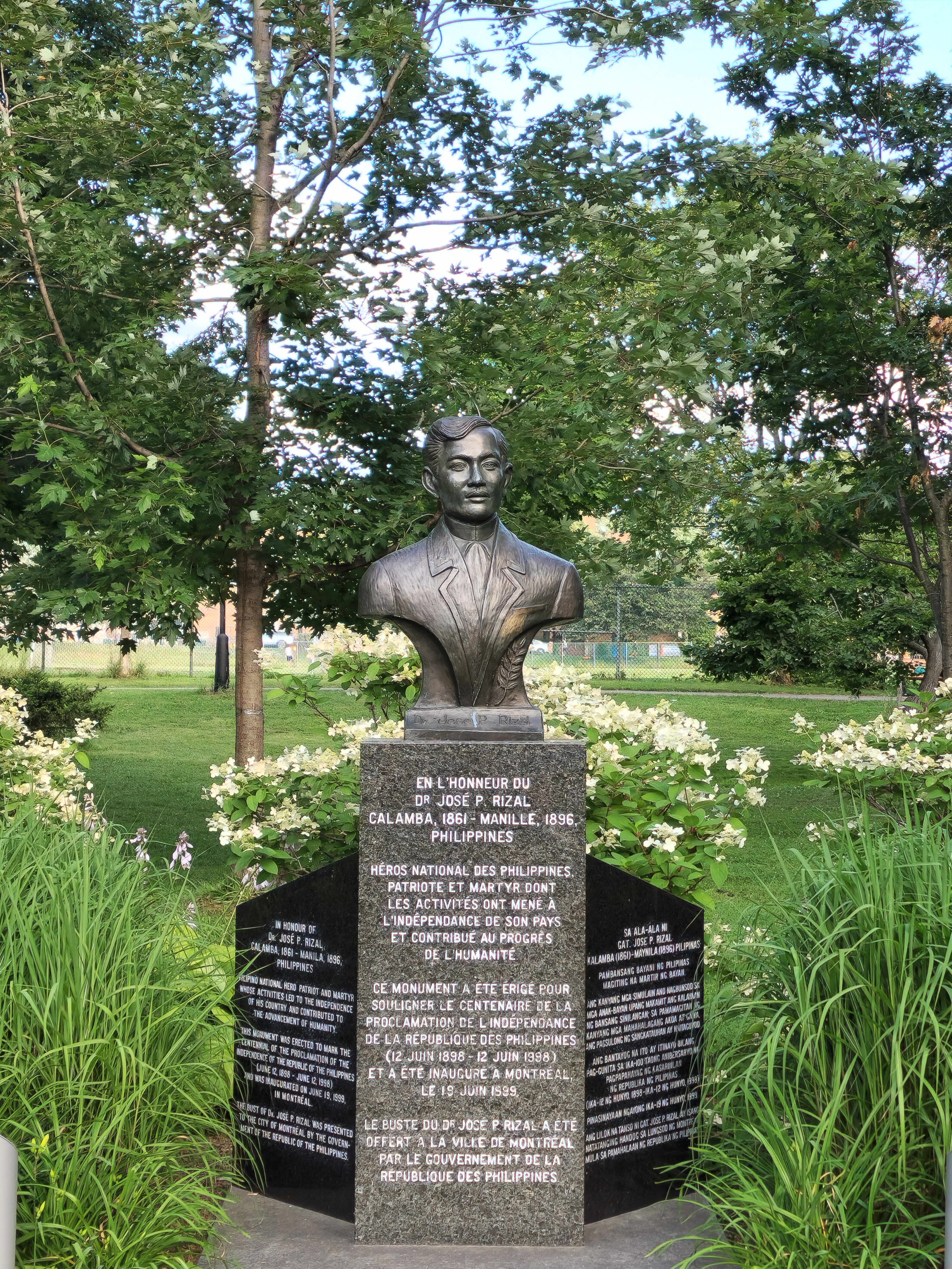Toronto and Montreal Summer Escape
My 22nd summer unwound slowly. By the end of July, it was too hot to go to the beach; the sun was scalding, and the potential of a heat stroke kept us at bay from the ocean. I did not swim in lakes with family friends or watch the smoke billow from the barbeque. I worked from home everyday, attempted to write consistently and looped aimlessly around the park. All three adults in my house were working constantly, which meant, of course, that all of us were eager for a reprieve, a sunlight-tinted, dream-escape from our day jobs. After months of scanning potential destinations, this manifested itself in a five-day family trip away from the west coast. And so we criss-crossed the months of July to August on trains, planes and buses. We ate poutine and lasagna and missed our dearly departed rice cooker.
From July 17 to July 20, we were fortunate enough to be able to visit the traditional, ancestral, and stolen lands of the Mississaugas of the Credit, the Anishnabeg, the Chippewa, the Haudenosaunee and the Wendat peoples. From July 20 to July 22, we were on the traditional, ancestral, and stolen lands of the Haudenosaunee and Anishinaabeg peoples. Or what is colonially known today as: ‘Toronto’ and ‘Montréal’.
‘Toronto’ originates from Tkaronto, “a Mowhawk word translating literally to where there are trees standing in the water” (culturetrip), while ‘Montreal’ is Tiohti:áke in Kanien’kéha, and Mooniyang in Anishinaabemowin (McGill).
I start with this introduction because, as non-Indigenous people, it is important not only to use their first names, but to think critically about what information and histories we are taught---even in things such as the Hop On and Hop Off tours which I mention below. Though things are slowly changing, the majority of mainstream communications focus on the voice of the coloniser and present it as the objective truth. It is important to actively seek out Indigenous histories and perspectives, and to remember these truths as we live and travel on their land.
***
After a short 3-4 hour flight, we arrived in a city so humid that it reminded me of stepping outside of the plane in the Philippines and being thrust into a cloud of moist air. By the time we left the airport with all of our bags, it was late in the afternoon, so we bought tickets for their GO train (think of it as their version of the Skytrain) and, after a short ride, easily found our way to the AirBnB.
Thanks to my parents’ meticulous searching, we were able to find one located so close to the CN Tower that we only needed to slip onto the balcony to watch it light up the city. After an hour or so of relaxing and unpacking, we ventured outside for dinner. In a popular restaurant called Jack Astor’s, we celebrated my Tito and Tita’s anniversary with rich helpings of nachos, burgers and fries. By the time we left, the sun was dimming and there was nothing left to do but to rest and prepare for a busy day of true sightseeing.
The next morning, we began on the Hop On and Hop Off bus; infamous tours hosted on a line of bright red doubledeckers---reminiscent of course, of the iconic buses in London. For approximately two hours, you will have a guide who takes you from ‘old’ to ‘new’ Tkaronto, spouting facts about everything from the city’s architecture to the activities of its more famous inhabitants. Though you are allowed to ‘hop off’ at any time, as the name suggests, we opted to experience the whole tour first.
Weathering a sprinkle of light rain, we spent the morning photographing countless sky-high buildings and much older monuments from our bird’s eye seats on top of the bus. Our guide gave us a wide scope of the city’s urban areas: from the University, to the Bell tower, to the town halls.
As it was my first time in Tkaronto, I found it fascinating to see how structurally similar and/or different it felt from home. To the mainstream, ‘Vancouver’ often prides itself on being as relaxed as the waters that meet its coast. Tkaronto, on the other hand, is known for a faster-paced hustle, not unlike its close neighbour, ‘New York’.
Sure enough, we saw a good amount of busyness and foot traffic weaving through its towering skyscrapers and downtown area, where we spotted a real-life Spiderman, busking musicians and comic books being sold on the pavement. Interestingly, there were also many well-preserved, heritage buildings whose architecture evoked more of an older, classically European style. According to the tour guide, solid legal protections prevented these buildings from being demolished and allowed them to be repurposed as farm markets or banks.
After looping around the entire city once, we headed out for a quick lunch at the docks before boarding again on a free boat ride to Tkaronto’s islands. This boat ride is a part of the tour bus package, so we would definitely recommend allocating an hour of your time for this, as you will be able to see different kinds of wildlife (primarily birds) and enjoy the tranquillity of being on the water.
Our next day began with an early call time of 7:00 a.m. in order to catch the Megabus to Niagara Falls. After around two hours of sleeping through several playlists, we got off directly at the falls. It took only one step off the bus to find ourselves instantly swarmed by crowds. Strangers were scattered like birds with cameras, hundreds of phone screens shuttering across the enormous curve of the falls.
Before heading to our scheduled tour, however, we went for lunch at the Skylon Tower, a revolving restaurant with a similar design to the restaurant in ‘Vancouver’: a large dome sitting on top of a tall elevator. With a limited menu consisting mostly of fish, clam chowder and pasta, the point of this restaurant is not to have a ground-breaking culinary experience, but rather the view itself. Seeing the falls from such a high angle, as well as the surrounding land was truly stunning. To experience the height and view without the glass wall, we recommend stepping onto the observation deck before you leave.
After lunch, we were eager to embark on the so-called ‘Journey Behind the Falls’. Unfortunately, the line was incredibly long because you have to wait to get your ticket validated, even if you buy it beforehand. It took around two hours of shuffling forward in their provided, bright-yellow ponchos, to finally make it to the elevator that would take us below ground-level.
Once we tunnelled down, we found ourselves in a dark, damp hallway. The walls echoed with thrashing water, wet shoes slapping on the floor and strangers’ shrieks of excitement. As we walked along the hall, we discovered that there were multiple mini ports available to stop at, with plaques explaining each the history behind each one. Naturally, the main attraction was the platform where you can step outside and literally be in the middle of the Falls. Surrounded by the aquamarine water pouring over and around us, it is easy to be amazed by the power and vastness of creation.
Our third day actually included my personal highlight of the whole trip: taking the VIARAIL. Before boarding the train, I had romantic visions of what it would be like: listening to folklore-esque soundtracks, and gazing wistfully at the countryside with my little notebook in front of me. I was pleased to find out that this was exactly right. By purchasing VIARAIL’s business class tickets, we were able to enjoy refreshments in the lounge, board without waiting in line, and sit comfortably in a car that allowed plenty of legroom. The service itself was wonderful, as we were surprised to find that our tickets came with three fairly high-quality meals (dessert included!). After spending most of the six hours listening to music, writing, using their wifi and taking videos of the sunset, I would definitely say that trains are my preferred mode of transportation.
The first thing that we did when we arrived in ‘Montréal’ was, ironically, to search for directions regarding their public transportation. Although their train is underground, their system also works very similarly to Translink’s, and so it was pretty straightforward to find our way to the AirBnB simply by taking the metro.
After unpacking our things, we visited one of my Tito’s cousins, who kindly hosted us for a night in their suburban home; around thirty minutes away from the city. Happily married with grandchildren, the couple told us many stories about their life and last two decades in ‘Montréal’. They also drove us up to St. Joseph’s Oratory, a beautiful Basilica sitting appropriately on top of a hill. With sweeping ceilings, endless rows of wooden pews and a beautiful altar, the Basilica certainly lived up to its description as a ‘place of expression of faith, healing and peace’.
Again, we spent our second day doing a Hop On, Hop Off tour---only this time it was in blistering heat. Despite the weather, we were blessed with an amazing tour guide, who cracked several jokes in both English and French as he took us all the way from ‘Old’ to ‘New’ Montréal’. From cobblestone streets to a literal palace, it was clear that this was vastly different in comparison to ‘Toronto’. Their skyscrapers didn’t reach as high, and their streets were fraught with elegant columns and cathedrals. As a tourist, my first impression would be that it is architecturally more European than ‘North American’. However, it was also quite interesting to discover that the population of Montréal is really diverse---something that we noticed on the daily, as we came across gems on the street like a Filipino bakery and store signs in Arabic.
Naturally we also had to allot at least an hour to enter and explore the famous Notre Dame cathedral, a popular spot even for non-Catholic tourists. Our family was fortunate enough to see Notre Dame in France before the fire, so it was particularly interesting to visit with this memory at the back of our minds.
As soon as we walked in, however, we were speechless---probably for the best, considering it is after all, a place of prayer. In the front, of course, was Jesus on the cross, the focal point of the cathedral. The altar was also surrounded by angels and apostles, delicately carved into the heavenly blue sky. The strategically placed lighting and rows of flickering candles only added to the effect of holiness.
Everything, from the wooden art on the sides of the pews to the intricately patterned columns, was crafted with intense amounts of detail and love.
Thanks to our wonderful hosts from the night before, we ended our day by finding Jose Rizal’s monument in a park serendipitously close to our AirBnB. Though we longed for rest, we made a short trek to the park, not quite sure what would face us there. And then, sure enough, standing proudly amongst swaying trees and foliage, was a beautiful bust of one of the Philippines’ national heroes, with a plaque written in French and Tagalog.
Although we (regrettably) only spent one full day here, it was enough time to at least eat one poutine, buy their famous bagels, and catch a glimpse of the city and many iconic structures. Bone-tired, we spent the last day taking the train back to ‘Toronto’ before flying back home.
***
On our first night in the AirBnB, I had a conversation with my Lola that stuck with me throughout the trip. As I was describing our vacation, she expressed her happiness for me---and reminded me to cherish and be grateful for the work that my parents had put in to bring us this experience, especially because ang pera ay nawawala, pero ang magagandang alaala ay pwedeng balikbalikan (money disappears, but you can always go back to beautiful memories).
Travel itself can be a grossly extractive activity; tourists come, take what they want, and go, leaving litter and environmental harm in their wake. We receive so much through these experiences; memories, food, hospitality. How can you truly care for where you are going? How can you honour the people and the histories that have existed on these lands since time immemorial? Whenever we embark on a trip, it is worthwhile to take a moment to humble ourselves, and reflect on how we can return what we receive.

